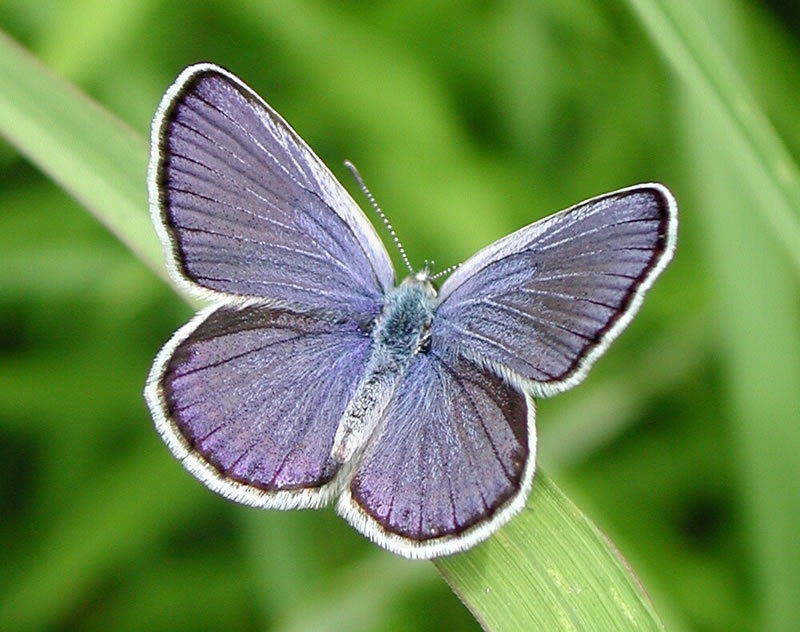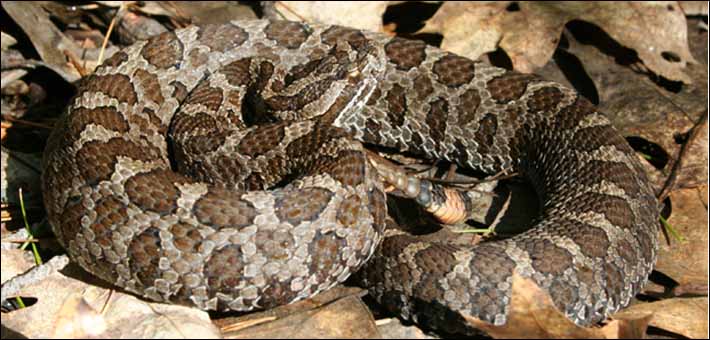
The Poweshiek skipperling is one of the rarest butterflies in the world. Image: David L. Cuthrell/U.S. Fish & Wildlife Service
By Marshall Lee Weimer
Imagine fitting the entire population of a species in the palm of your hand.
You can do that with the Poweshiek skipperling, one of the rarest butterflies in the world. Once occurring in hundreds of sites across the Midwest 20 years ago, only a few hundred individuals remain in three sites in eastern Michigan.
They are no longer a functional part of their ecosystem and are on the verge of extinction, said Nick Haddad, professor at Michigan State University’s Kellogg Biological Station and the world’s leading expert on another rare butterfly, the St. Francis satyr. Across the world, butterfly populations are declining 2% every year and have declined by 30% in the last 20 years.
Conservationists can take skipperling eggs and caterpillars from the wild and rear them in captivity, increasing the chances they’ll survive, Haddad said. But conservation like that requires something butterflies have no concept of: money.
“We know what restoration is needed, but that takes funding, effort, and support,” he said.
A bill recently reintroduced in Congress might provide that.
Recovering America’s Wildlife Act would provide states, territories and tribes with $1.4 billion annually to protect important species and their associated habitats. It directs the money towards Wildlife Action Plans used by conservation agencies. The bill was reintroduced April 22nd, Earth Day, by Rep. Debbie Dingell, D-Michigan and Rep. Jeff Fortenberry, R-Nebraska.
Wildlife Action Plans are developed by state agencies to protect endangered species. They are updated every 10 years to address changing conservation needs. Think of them as blueprints for conservation.
At-risk species are rated and ranked by how much they are threatened. The plans outline actions to conserve already endangered species and prevent them from becoming more rare and more costly to protect.
The new funding would really help conserve these species, said Dan Kennedy, the endangered species coordinator for Michigan’s Department of Natural Resources. There are many conservation needs that current funding is not capable of tackling.
“This is a once-in-a-generation bill for conservation,” he said.
A federal State and Tribal Wildlife Grant Program now funds only $60 million nationwide, about 5% of what we need for wildlife conservation, Kennedy said.

Money spent on wildlife versus how much is needed based on 2019 estimates. Image: Alliance for America’s Fish & Wildlife
The new money would be dedicated wildlife funding for years to come, said Sean Saville, the campaign manager for Alliance for America’s Fish & Wildlife, an organization representing state conservation agencies and advocating for the bill’s passage.
There are over 12,000 of what are called Species of Greatest Conservation Need nationwide that need additional conservation, including 1,600 species listed under the Endangered Species Act, Saville said. It costs $480 million in taxpayer money just to file the paperwork for the current 1,600 listed species. Without dedicated funding, those unlisted 12,000 species may eventually be added to the list.

The endangered Karner blue butterfly has benefited from additional conservation funding. Image: U.S. Forest Service
“That’s $3.6 billion a year potentially in paperwork alone,” he said.
The economic impact of the bill would be significant. Saville’s organization estimates this funding will create 33,000 to 34,000 jobs annually. The outdoor recreation economy generates over $124 billion annually in tax revenue and $788 billion in consumer spending, which depends heavily on abundant wildlife and healthy habitats for recreation, he said.
The bill could generate up to $93 billion of economic activity annually, he said.
“The economics are clear; this is one of the best returns on federal investments.”
The $1.4 billion in the bill would allocate money to specific groups, Kennedy said. Tribal wildlife managers will receive $97.5 million, while no less than 15% of each states’ funding shall assist in the recovery of endangered species. State governments would have to match 25% of the federal funds.
The bill passed the House Natural Resources Committee in 2019 with a 26-2 vote but was never brought to the floor for a vote. It had over 180 bipartisan cosponsors. Another version had passed the House as an amendment to the Moving Forward Act, a House infrastructure package.
It has changed slightly since 2019. The newer version will grant state agencies an additional 5% of their total amount for rare plant conservation. And funds now could be allowed for outdoor education and wildlife-associated recreation programs. The bill would also send more money to states with high numbers of federally threatened and endangered species.
Not everyone supports it, Kennedy said. Some environmental groups would like to see more significant funding to listed species, while fiscal conservatives are concerned with the price tag.
But wildlife conservation is a seriously bipartisan issue, said Charles Wooley, the U.S. Fish & Wildlife Service director for the Great Lakes region. Constituents want it, and it brings both economic and environmental benefits.
“A healthy backyard for the U.S. leads to a healthy economy,” he said.
The purpose of the bill is to not only save species on the brink of extinction, Haddad said. It also will prevent species from approaching the rarity of the Poweshiek skipperling. Conservation funding is needed to keep species as functional parts of ecosystem.
When wildlife does have funding, even rare species can recover. The Karner blue butterfly, another endangered Michigan species, is recovering due to conservation efforts by Michiganders, Haddad said.
Maybe even the handful of the world’s skipperling population can regain its ecological importance if the insects become abundant again, he said.
But that all depends on funding.
Federal wildlife grant to Great Lakes states in 2019. Image: Marshall Lee Weimer
Related Story: Michigan offers $1 million to improve wildlife habitat






